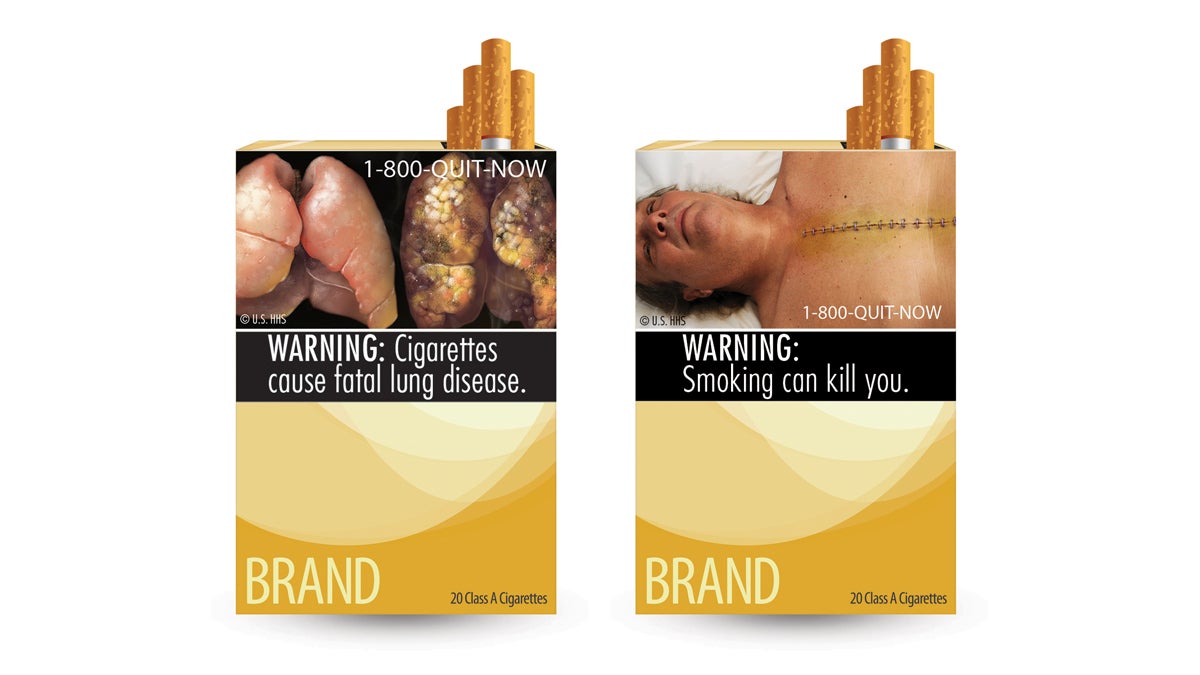Evidence builds for effectiveness of graphic warning labels on cigarettes
Listen
This combo made from file images provided by the U.S. Food and Drug Administration shows potential cigarette warning labels. (AP Photo/U.S. Food and Drug Administration, File)
Although many countries put pictures of blackened lungs or cancerous mouth sores on cigarette packaging, the U.S. has held off because it’s been unclear if those images actually deter smokers.
New research from the University of Pennsylvania suggests the high emotional value of the gruesome shots is key to how they work.
Penn psychiatrist Daniel Langleben and his team took brain scans of 24 smokers as they viewed warnings accompanied by high- or low-emotion pictures. Immediately following a specific image, participants were asked to rate how much they wanted a cigarette. Twenty minutes later they were quizzed on whether they could remember the labels they had seen.
When the team compared the scans, areas of the brain involved in emotion and memory were more active in those who had viewed the more graphic warnings.
“We also found that these labels were better remembered and associated with a greater reduction in craving for cigarettes,” said Langleben, the senior author of the study and a research fellow at the Annenberg Public Policy Center.
The results were published in the journal Tobacco Control.
William G. Shadel, a behavioral scientist at the RAND Corporation who was not involved in the study, said it offers an important piece of the puzzle.
“It doesn’t go quite so far as to show it prevents smoking,” he said. “But certainly this is important information that the FDA is going to need if they decide to pursue graphic warning labels further into the future.”
The FDA had planned on implementing the labels back in 2012 to comply with a federal law passed several years earlier. But tobacco companies stymied the agency in court, with federal judges ruling evidence was necessary that the warnings were effective – and not needlessly frightening – to overcome the companies’ First Amendment rights.
The new findings, Langleben said, suggest that the scariness is in fact required.
“The emotional reaction to the pictorial or graphic warning labels considered and proposed by the FDA seems to be part and parcel of their effectiveness,” he said.
The real test will come in the next phase of Langleben’s experiments. The scientists are following smokers for a month to see if they light up less when using cigarettes with the graphic packaging.
In practical use, public health officials may still struggle to get their message across. In countries that already using the images, Shadel said, some smokers come up with their own work around.
“They’ll certainly buy their cigarettes and smoke them,” he said. “But so they don’t have to look at graphic warning labels or a diseased mouth or a diseased lung, every time they’ll pull out their cigarette packaging, they’ll actually put tape over the cigarette packaging.”
In this regard, Langleben said, the reduced craving smokers reported immediately after viewing the emotional pictures might be valuable. If that translates into even slightly fewer purchases at the tobacco stand, across America’s 42 million smokers, it could add up.
WHYY is your source for fact-based, in-depth journalism and information. As a nonprofit organization, we rely on financial support from readers like you. Please give today.

